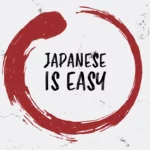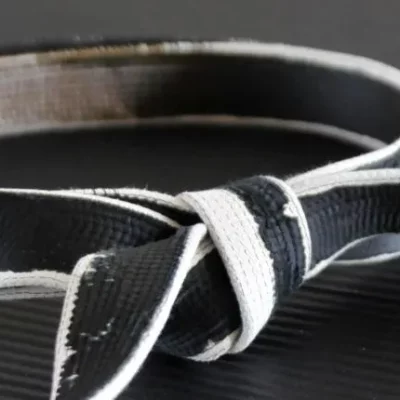Japanese Martial Arts are just one of the many types of martial arts available. Teaching a Japanese Martial Art entails exposing students to Japan’s culture as well, since it heavily influences the method of training.
Japan is home to some of the most widely recognized Martial Arts; Karate, Aikido, Judo, Jujitsu and of course Ninjutsu all orginated in Japan. In fact the concept of the “Black belt” can be traced originally to Japanese Martial Arts – predominantly Judo.
Japanese Culture
Traditional bow-in ceremony towards the Kamidana at the beginning of class
Before we begin discussing Japanese Martial Arts, it’s important to note some of the unique aspects of Japanese culture since it’s directly reflected in the training.
Overall the Japanese are EXTREMELY polite, and as part of their culture they tend to maintain a high level of honor and respect.
Ambiguity
One important aspect of Japanese Culture as it relates to Martial Arts training is ambiguity. Rarely are things explained explicitly, and there is always an element of uncertainty in everything. This can be seen in the language itself; referring to someone directly by saying “you” (“anata”) can be considered rude.
This means for Japanese Martial Arts training, there is a larger degree of responsibility on the student to pay attention during classes, since things will rarely be “spelled out” for the student to learn a technique. This is less prevalent in martial arts schools in the west, but assuming thet teacher has trained formally in Japan, you can expect that some things won’t necessarily be explained directly to the student; rather it it’s up for intrepretation by the student.
Precision
a japanese woman shows the tea ceremony during a public demonstration
The other, and somewhat contradictory, aspect of Japanese culture is the pursuit of efficiency and precision. Since Japan is an island with limited resources, the Japanese have become very efficient in their use of resources. Due to the lack of space, many rooms are built with particular detail to utilizing the limited space in the most efficient means possible. This is also evident in the food; many dishes use large amounts of rice to create a satisfying meal (in fact the term for meal – “gohan” – is also the same word for rice).
This precision and efficiency is also reflective in their Martial Arts; using as little energy to make a technique work. The most obvious example is their swordsmanship, where precision is key between life and death. When we think of this in terms of the Samurai wearing full armor on a battle field, the importance of efficiency of movement and limiting wasted energy becomes even more important (you learn to fight very efficiently wearing 60 lbs of armor).
Hierarchy
The last item we’ll mention of Japanese culture is hierarchy; much of the culture revolves around the “status” of an individual. Japan’s history involved a caste system, or a system of classes that individuals were born into (i.e. a Feudal system). Again we can see this in their language, as words are conjugated differently depending on the status of the speaker and the listener.
Understanding these elements – and others – of the Japanese Culture will help you understand Japanese Martial Arts, since they are both intertwined.
Bugei, Bujutsu, and Budo
While we tend to simply use the one term “Martial Art” in English the Japanese use three specific phrases to describe martial arts: these are “Bugei”, “Bujutsu”, and “Budo”.
Here is a print of a Samurai General holding a Yari. The Yari or spear was a popular Japanese Weapon of the Samurai. It was often used to create a barrier from opposing forces on horseback.
Bugei
“Bugei” is the most literal translation of the English “Martial Art” in Japanese, and is used to describe martial arts in general.
Bujutsu
“Bujutsu” doesn’t have a direct English translation, but it can be interpreted as “the science of warfare” or “war technique”. Bujutsu describes Japanese Martial Art training as it relate to the battlefield. These are focused more on the practical “science” of combat.
Budo
“Budo” literally means ‘Warrior Way”. This is a modern term that encompasses more of the philosophical and spiritual elements of Japanese Martial Arts. Budo usually describes incorporating Japanese Martial Arts as a “way” of life, rather than a specific set of combat skills.
The Two Types of Japanese Martial Arts
While there are numerous different lineages and schools of Japanese Martial Arts, all Japanese Martial Arts can be classified as either “Koryu” (“ancient” or “old-school”) and “Gendai Budo” (“modern martial way”).
Here is a picture of Samurai holding Naginata. It can be best described as a katana with a very very long handle.
Koryu
Technically a Koryu Art is any Japanese Martial Art that can trace it’s lineage to before the Meiji Restoration of 1868, or the Haitorei Edict of 1876. Koryu Japanese Martial Arts tend to train as the lineage was taught during the more turbulent times in Japan where practical use on a battlefield was the emphasis, although some schools may update some of the curriculum for use in modern times. This however can create controversy, as some would argue that if the training varies at all from what was taught before the “Koryu cut-off”, then it may no longer technically be considered Koryu. Still the most important factor is whether the school existed during that time, and whether or not the training reflects it’s use on the battlefield.
Gendei Budo
Gendei Budo describes Japanese Martial Arts that were founded after the Meiji Restoration/Haitorei Edict, and generally focus more on self-improvement (i.e. Spirtuality, Physical Fitness, etc.) than effectiveness for combat. This doesn’t mean that Gendai Budo aren’t effective, nor encompass combat techniques; rather it implies the art is both modern in it’s development and take into account aspects of training beyond mere combat.
Japanese Martial Arts Roles
As we said regarding Japanese Culture, there is a hierarchy in Japanese Society as well as in a Dojo.
Soke
The term “Soke” translates as “head of the family” and is usually associated with being a Grand-master or lineage holder of a Japanese Martial Art. The name has a certain religous undertone – almost as the person is the high priest or guardian of the art. This is term is utilized by a few arts, but is not universal in all Japanese arts.
Shihan
Shihan is a title usually reserved for individuals that have particularly high ranks in a Martial Art. This term can be equated with “Master”.
Sensei
“Sensei” is a term used to describe a teacher of anything – not just martial arts. A Japanese Martial Arts school may have more than one Sensei, although it’s usually clear which Sensei has seniority over the others (usually by their rank). The term O’Sensei (“Great Teacher”) is a term reserved for Aikido when referring to their founder.
Sempai and Kohai
In addition to the hierarchy above, there is also a hierarchy among students as well.
A “Sempai” or “Senior” is usually an elder and is considered a higher status than the “Kohai” or “Junior”. This isn’t limited to age; in a Japanese Martial Arts school the Sempai is usually the student that has been training longer or is a higher rank.
This means every student has – and is – both a Sempai and a Kohai. In essence it is the Sempai’s job to help the Kohai and act as a guide for them in training. This can be difficult since being too direct and explicit can be rude, disheartening, and even detrimental to the training. A balance must be found between being helpful to the Kohai while still allowing them to explore training for themselves.
As a Japanese Martial Arts school, we find it important to immerse the students and educate them on the culture behind it, allowing them to the most out of their Japanese Martial Arts training.






